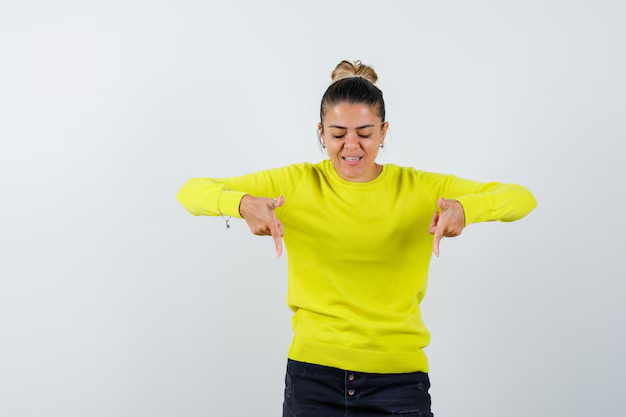Understanding Shortness of Breath: Is Anxiety the Cause? 🤔
Breathing is a natural process we often take for granted—until something feels off. When you experience shortness of breath, it can be alarming, leading to concerns about underlying health conditions. However, not all breathlessness is tied to physical health issues. In some cases, anxiety might be the culprit. But how can you tell if your shortness of breath is stemming from anxiety or something more serious? Let’s explore this complex topic to provide you with the clarity you need.
Grasping the Mechanics of Breathlessness
Before delving into the distinctions between anxiety-induced breathlessness and other causes, it helps to understand what shortness of breath actually involves. Medically termed dyspnea, this sensation encompasses breathing difficulties ranging from mild discomfort to a severe struggle for air. It's crucial to recognize that dyspnea is a symptom, not a diagnosis.
Common Causes of Shortness of Breath
- Physical Exertion: Often a normal response to activities like running or climbing stairs.
- High Altitudes: Lower oxygen levels can make breathing labored.
- Respiratory Conditions: Issues like asthma, pneumonia, or chronic obstructive pulmonary disease (COPD) directly impact breathing capacity.
- Cardiovascular Health: Heart-related conditions might reduce blood flow, affecting oxygen distribution and causing breathlessness.
The Anxiety Connection
Anxiety can affect your breathing in profound ways. When anxiety flares up, your body's natural fight-or-flight response activates. This survival mechanism, designed to prepare you for immediate danger, can lead to hyperventilation, where you breathe more rapidly and shallowly than necessary. This response can mimic the sensation of shortness of breath.
Signs That Anxiety May Be the Culprit
- Panic Attacks: Sudden, intense bouts of fear often accompanied by physical symptoms, including difficulty breathing.
- Generalized Anxiety Disorder (GAD): Persistent worry causing subtle, yet chronic, breathlessness.
- Physical Symptoms of Stress: Muscle tension and rapid heartbeat influencing respiratory patterns.
Spotting the Difference: Physical vs. Anxiety-Related Dyspnea
Distinguishing between breathlessness caused by anxiety and other factors requires careful observation of your symptoms and circumstances.
Key Indicators to Consider
Timing and Triggers: Anxiety-induced breathlessness often coincides with stressful situations or thoughts. If symptoms quickly arise during high-stress moments and subside with relaxation techniques, anxiety could be the cause.
Accompanying Symptoms: Anxiety-related shortness of breath often comes with other symptoms such as a racing heart, chest pain, dizziness, or feeling of impending doom. Observing these connections can help clarify the source.
Duration: Consider how long your breathlessness lasts. Chronic or progressively worsening symptoms should prompt a more thorough medical evaluation.
Response to Relaxation Techniques: If deep breathing, meditation, or other calming strategies relieve your symptoms, there's a chance anxiety plays a key role.
Practical Steps to Manage Anxiety-Induced Breathlessness
If you've identified anxiety as the likely cause of your breathlessness, it’s empowering to know there are tangible steps you can take.
Breathing Techniques
Deep Breathing: Inhale slowly through your nose, hold for a few seconds, and exhale through pursed lips. Aim for a longer exhalation to promote relaxation.
Box Breathing: A structured technique involving equal counts for inhaling, holding, exhaling, and pausing. This focused approach can reduce anxiety and regulate breathing.
Lifestyle Adjustments
Regular Exercise: Physical activity helps reduce stress levels and can improve respiratory health.
Mindfulness and Meditation: Incorporating mindfulness practices into your daily routine can help manage stress and prevent anxiety-induced symptoms.
Adequate Sleep: Ensuring sufficient rest improves overall mental health and resilience against stressors.
When to Seek Professional Help
While managing anxiety independently is possible for many, certain situations require professional input. If you experience any of the following, consider reaching out for support:
- Persistent or worsening shortness of breath without clear triggers.
- Significant interference with daily activities.
- Physical discomfort like chest pain or extreme dizziness.
Understanding the Broader Context
The interplay between anxiety and physical health is complex, but understanding it can empower you to take meaningful steps. Remember, recognizing patterns and implementing appropriate strategies can significantly enhance your well-being.
In summary, shortness of breath can be a confusing and distressing experience. By examining your symptoms, considering potential psychological causes, and taking proactive measures, you can alleviate anxiety-induced breathlessness and improve your quality of life.
Quick Reference: Navigating Anxiety-Induced Shortness of Breath
- Identify Triggers: Recognize situations or thoughts that lead to breathlessness. 🧠
- Monitor Symptoms: Note the frequency, duration, and accompanying symptoms. ⏰
- Practice Relaxation: Utilize deep breathing or meditation to ease symptoms. 🧘♀️
- Maintain Healthy Habits: Exercise, sleep, and mindful living enhance resilience. 🚶♂️
- Consult Professionals: Seek help for persistent or severe symptoms. 🆘
Understanding the nuances of breathlessness empowers you to make informed decisions for your health and peace of mind. 🌟
